 Leading Blog | Posts by Month |
 Leading Blog | Posts by Month |
12.31.23

LeadershipNow 140: December 2023 Compilation
See more on
Posted by Michael McKinney at 11:54 AM
12.28.23

Leading Thoughts for December 28, 2023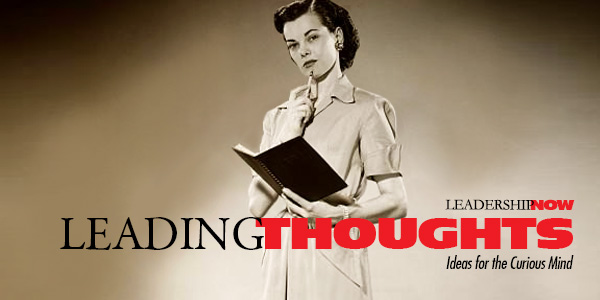
IDEAS shared have the power to expand perspectives, change thinking, and move lives. Here are two ideas for the curious mind to engage with: Scott Weiss on straight talk: “Uncertainty has yet to emerge as a higher-order value or behavior that organizations eagerly reward. It’s much easier to throw up an obfuscating cloud of doublespeak, to offer a glib, condescending sound bite, or even to lie outright than to admit that we simply don’t have the answer. But these are tactics that devalue both the question and the questioner. They may temporarily protect our image, but they are not ethical communications, and they don’t engender trust.” Source: Dare: Accepting the Challenge of Trusting Leadership Michael Marquardt on the value of questions: “A questioning culture encourages reflection. When we are immersed in a culture that encourages questions, it helps us become more self-aware, more conscious of choices we have made, more deliberate about our decisions. When a non-threatening environment for questions is a daily reality, people become ever more comfortable with themselves, know their strengths better, and are more self-assured.” Source: Leading with Questions: How Leaders Find the Right Solutions by Knowing What to Ask Look for these ideas every Thursday on the Leading Blog. Find more ideas on the LeadingThoughts index.
Posted by Michael McKinney at 09:08 AM
12.22.23

Managing Company Culture Anthropologically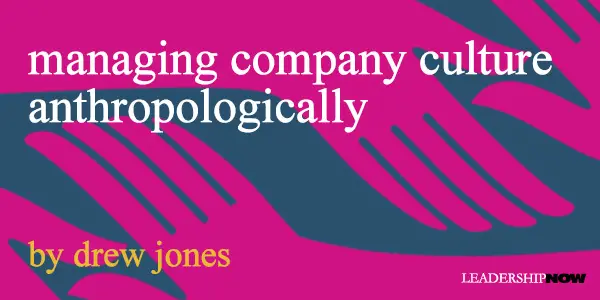
BUSINESSES are really bad at establishing an engaging culture. Despite its perceived importance, for the most part, companies have a miserable track record when it comes to managing their people. On the one hand, most CEOs agree with with the statement attributed to Peter Drucker: culture eats strategy for breakfast. Yet, on the other hand, the data shows that following through on this conviction can be elusive. The Culture Dilemma Employee engagement in American companies has hovered around 30 percent for 60 years. Seventy percent of corporate “change programs” fail to achieve their stated goals. Large firms spend around $2,200 per employee per year on culture, yet only 30 percent of those efforts have a positive ROI. Further, only 69 percent of employees believe in the cultural aspirations of their leaders, and a full 90 percent of employees don’t behave in ways that align with those aspirations. Companies consistently get culture wrong because they go about assessing it, and attempting to manage it from the top-down, not the bottom-up. But what does this mean? Typically, a large organization will administer a culture survey — a large inventory of questions that results in placing the “company culture” into one of several “culture types” or “culture orientations.” The survey reveals the culture that a company has now and gives it an idea of what “type” of culture it can have in the future. This approach plays right into the hands of eager consultants because getting from the current culture to the desired future culture becomes a gap-closing program. Consultants love a gap-closing program almost as much as they love a SWOT analysis. Ticking the boxes of a culture survey is satisfying for an HR manager because she collects “data at scale,” which is generally referenced in numbers, pie-charts, and graphs of various shapes. However, the gap-closing process falls apart quickly when the company compels employees to change their behavior in order for the company to arrive at its future desired culture. Data clearly indicates that this does not work. The Anthropological Alternative Anthropology as a discipline has been studying cultures around the world for more than 150 years. Anthropologists set out to understand culture through the qualitative research method of ethnography — the process of spending time with research subjects in the actual contexts where they live, work, shop, play, and celebrate. Ethnography is premised on empathy, and the goal is to understand a given culture from the “natives’” point of view — through their eyes, in their words. Ethnography allows a researcher to focus on the lived experiences of people and how those experiences reflect and shape culture in that environment. The Employee Experience (EX) Imperative No survey architect, as brilliant as they may be, can really know anything about the specific experiences of employees in a particular company. Their culture types are a mere shorthand in the quest for hard data. Companies that focus anthropologically on employee experiences can shape cultures in ways consistent with the aspirations and goals of their employees. Typically defined as the “values, beliefs, and behaviors” that people in organizations share, corporate culture too often remains an unattainable abstraction. A shift to the everyday experiences of employees shifts the focus of what culture is in an organization. An EX approach to culture focuses on the tangible, daily experiences of employees and what those mean to employees (again, in their words). Among others, five tangible aspects of work in particular, shape experience, and culture. 1. Why: Purpose and meaning - Humans are a storytelling species, and we value being a part of a meaningful story. Culture starts with a compelling story. Does the company story resonate? 2. What: Learning and growth - People are natural learners and experimenters. How much of their full cognitive and intellectual muscles are being used? 3. How: Autonomy and flexibility - Humans self-organize and accomplish things most effectively without too much management. How does the organization enable teamwork? 4. Who: Leadership trust - Does leadership trust its employees to take risks without fear of being punished? Do they allow people to be themselves at work? 5. Where: Community - Does the company campus, or digital infrastructure, successfully balance employees’ need for community and autonomy? An EX approach to understanding a company’s culture starts with questions like these, in which employees are encouraged to elaborate, in ethnographic interviews, on how they (and not a survey writer) feel about the questions. Work-Life Shift at Fujitsu Fujitsu, the Japanese digital transformation conglomerate, exemplifies the power of an EX approach to managing its people. In response to the Covid-19 pandemic, Fujitsu introduced a radically employee-centric new approach to managing its people. Focusing on people first, they introduced several changes from which any company can learn. • Digital-first: They shifted to a digital-first working model, allowing employees to work from home if they chose to. The goal was to help employees put their family needs first. • Coworking-like offices: They closed their large downtown offices in Tokyo and shifted to small, satellite coworking-like spaces in the suburbs so that employees who did want to work at an office didn’t have to commute very far. Also, start-up companies in the Fujitsu technology accelerator program work in the satellite locations as well, creating a company-startup mashup. • Autonomy: They are working to devolve critical decision-making to the individual and team level to cultivate an atmosphere of autonomy and self-directed work. • Passion projects: They now allow employees to take outside employment or to start their own businesses on top of their commitments to Fujitsu. This is a recognition that employees have passions they aren’t fulfilling at the company and that they value that for their employees. Every industry is different, and every company is unique, so there’s no one-size-fits-all solution for addressing the culture dilemma. However, starting with a thoughtful and empathetic consideration of employee experience and taking that seriously is a fruitful way to start. Fujitsu’s Work-Life Shift program clearly demonstrates that.  
Posted by Michael McKinney at 10:56 AM
12.21.23

Leading Thoughts for December 21, 2023
IDEAS shared have the power to expand perspectives, change thinking, and move lives. Here are two ideas for the curious mind to engage with: John Mattone on getting it right: “Leaders generally derail not because of a character flaw but rather because they respond immaturely to mounting stress and change.” Source: Intelligent Leadership: What You Need to Know to Unlock Your Full Potential KUSI CEO Talia Fox with an observation regarding organizations: “Organizations have hierarchies, but rather than mere levels of power, they operate more as levels of understanding and observation.” Source: The Power of Conscious Connection: 4 Habits to Transform How You Live and Lead Look for these ideas every Thursday on the Leading Blog. Find more ideas on the LeadingThoughts index.
Posted by Michael McKinney at 04:21 PM
12.18.23

4 Ways to Improve Your Team’s Decision-Making Habits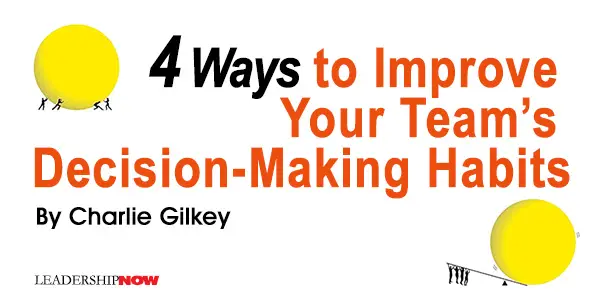
MOST WORK TEAMS have the same silent member who’s constantly dropping the ball. A slacker named “somebody.” Somebody was supposed to call the vendor. Somebody was supposed to check on the competition. Somebody was supposed to consult the boss. But somebody never does anything. Sound familiar? Of course, it does. That’s because you almost certainly have a “somebody” on your team. In my experience, though, as a guy who coaches and trains work teams professionally, I know this to be true: There is no somebody. That is, your team doesn’t have a “somebody” problem; it has a decision-making problem. And that makes knowing who’s responsible for doing exactly what, and by when, a real problem—one that reverberates through everything else your team does. A decision on such-and-such was made at the last team meeting, right? And who in the team would act on it, right? And in what time frame, right? Or does it just seem like you had decided? My money is on the latter. There is hope and help, however. Here are four surprisingly simple ways to improve your team’s decision-making habits. 1. Recognize that decision-making isn’t just social—it’s emotional. In teams, decision-making is about far more than gathering round to go over options and get to a pick. It’s also an emotional undertaking that involves the values, fears, and aspirations of the people making the decisions. Recognizing that emotional component can help your team appreciate why some decisions may be harder to make and act on than others. It also cultivates a decision-making environment where everyone in the team feels heard and respected and where people’s individual insights or skill sets are considered to make the best possible decisions. 2. Remove decision-making bottlenecks with the “three levels” framework. There are three levels of decision-making in a team, and understanding and applying those levels can help teams discern who has the power to make what types of decisions. Level 1 represents decisions that team members can make independently. Level 2 represents decisions that team members can make independently but need to let the rest of the team know when they do. Level 3 represents decisions that team members can make only after getting a thumbs-up from the rest of the team or management (or both). Ideally, about 80 percent of your team’s decisions should fall within Level 1. That not only empowers team members to act within their role or scope, but also escapes endless (and endlessly counterproductive) decision loops. It’s also a great way to prepare people for leadership. When team members get hung up on which level a particular decision falls into, they should schedule a quick conversation with the team to cover any questions or concerns. 3. Use intent-based decision-making. Intent-based decision-making is a powerful tool, as it allows team members to make individual decisions based on a clear-cut, agreed-upon understanding of the team’s overall objectives. So rather than letting people in your team waste precious time while waiting for permission on every little thing, they can proceed independently in the moment, as long as they’re acting within the boundaries of the team’s goals and mission. 4. Keep a team decision log. (Nobody’s memory is that good.) We’re all human beings, so it’s understandable when teams forget who’s responsible for what task or project, especially when, earlier, myriad decisions were made in a rush-rush call or meeting. Maintaining a decision log solves that problem by tracking who in your team is responsible for doing what and by when. It also makes for an easy-breezy accountability tool. In closing, remember that your team doesn’t have a “somebody” problem—it has a decision-making problem. And you can solve it in four surprisingly simple ways.  
Posted by Michael McKinney at 04:39 PM
12.15.23

Visionary Thinking Is a Practiced Skill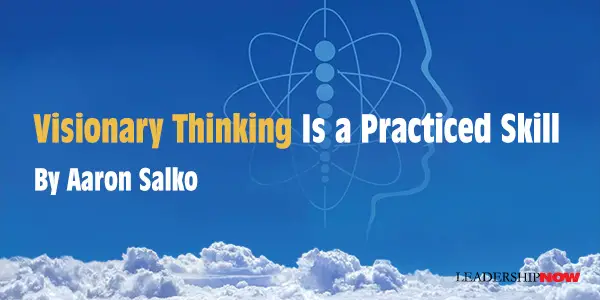
VISIONARY THINKING is the ability to see the big picture, envision what the future could look like, build a plan to achieve that vision, and lead yourself and others down the path of execution. First, you see things in your mind, and then you work both consciously and subconsciously to make them happen. In my younger years, I had many visions of the ideas, goals, and positions that I wanted to achieve. Some of them came to fruition. Some took me down other roads that led me to new experiences, which brought with them new visions. All were worth the effort and journey, and I realized very early on that visionary thinking was a major contributor to the success levels I had attained. As I looked back, I realized that most, if not all, of the 45 Performance-based Skills are utilized in some way during visionary thinking. It’s important to explain our society’s view of visionaries in order to shift your mindset away from thinking it’s unattainable. Having visions and being able to execute them will have an impact on the success levels you’ll achieve. Those who lack vision or don’t know how to identify and act on their vision will struggle with wealth attainment, achievement of goals, and personal fulfillment. When most of us think of visionary thinkers, names such as Thomas Edison, Albert Einstein, Steve Jobs, Elon Musk, Sheryl Sandberg, and Jeff Bezos come to mind. They’re viewed by many of us as “magical creatures.” That sets a high bar for the practice of visionary thinking. I’m not trying to downplay the incredible success these people have achieved, but I believe everyone is capable of being a visionary — you just need to develop the skills to identify the vision and then bring it to reality. Who knows, maybe one of your visions could be the next Amazon.com. A powerful vision creates the will to make change happen and harnesses the energy that will be needed. It inspires action and recruits the people and resources needed for new perspectives and ideas. It motivates individuals and organizations to commit to achieving the overall goal — no matter the number of roadblocks that get in the way. Here are the components that form the backbone of visionary thinking: 1. Cultivate a visionary mindset: To create a vision that elicits excitement and interest, you must give yourself the freedom to dream. Imagination is the key that unlocks the door to seeing and feeling what doesn’t yet exist. You must be bold in your thinking. To do that, you must allow yourself to think in the abstract. This entails battling against your own and our society’s programmed channels of thought. Then, integrate the abstract rationally into the real world in order to map the pathway to execution. 2. Tap into your subconscious: Your subconscious is the key to creating a pathway that makes a vision a reality. It’s important to get in tune with your intuition or gut instincts. Gut instincts are actually your subconscious directing your actions based on all the information it gathered while you were busy in your conscious life. In visionary thinking, you use your subconscious as a guidance tool. It will direct you as you navigate decisions, direction, and key components needed to create your vision. 3. Unleash your creativity: Have you ever been asked to “think outside the box”? If you are methodical and analytical, that statement probably makes you cringe. If you are artistic and creative, that statement most likely gets you excited. The reality is that creativity in your career environment is derived from both the need to solve a problem and the desire to avoid or solve future problems (which often leads to innovation). So, if you feel that you’re not a creative person, I will challenge you with the fact that you actually are because you’ve most likely had to create a solution to fix a problem at some point. This is the essence of creativity, although it goes well beyond problem-solving. It’s rooted in the deep desire to do things that go against the norm and push ideas that others may say are impossible. To be a wildly successful visionary, you must not fear creativity. 4. Hone your social skills: Having a vision is great, but unless you can help others see it and get them behind the execution, it will most likely die on the vine. This is why social interaction skills and boldness are so important to visionaries. They never do it alone. Visionaries get others involved and use the talents that surround them. Communication, trustworthiness, empowerment, networking, and likability are just some of the performance-based skills that you’ll need to optimize in order to influence others in the execution of your vision. 5. Embrace discomfort: When your mind is telling you that it has nothing to go on and lacks the ability to guide your path, embrace it! Nervousness is just your body preparing for action, and with the correct mindset, it can be a positive part of the process. Simply accept that you’re in an area of discomfort and that what happens next will bring with it experience, which in turn will raise your knowledge and confidence. When you embrace your discomfort and acknowledge your inexperience, the pressure reduces and the mind shifts. The best part of visionary thinking is that everyone is capable of it. The hardest part is taking the first step.  
Posted by Michael McKinney at 12:31 PM
12.14.23

Leading Thoughts for December 14, 2023
IDEAS shared have the power to expand perspectives, change thinking, and move lives. Here are two ideas for the curious mind to engage with: Glenn Llopis on the opportunities that you see and grow will determine your success: “The significance and impact of your work has more to do with the momentum of opportunities you pursue than anything else. The quantity of opportunities is a smaller matter. The quality of opportunities is everything. This explains why a green twentysomething can birth Facebook while fortysomethings everywhere struggle to make ends meet—or why more people became millionaires during the Great Depression than during any other era of American history, including the dot-com boom.” Source: Earning Serendipity: 4 Skills for Creating and Sustaining Good Fortune in Your Work Richard (Craze) Templer on flexible thinking: “If you want to know how flexible your thinking is, here are a couple of tests. Are the books by the side of your bed the same sorts of books you’ve always read? Have you found yourself saying anything like, “I don’t know any people like that” or “I don’t go to those kind of places?” If so, then perhaps it’s time to broaden your mind and take the shackles off your thinking.” Source: The Rules of Life: A Personal Code for Living A Better, Happier, More Successful Life Look for these ideas every Thursday on the Leading Blog. Find more ideas on the LeadingThoughts index.
Posted by Michael McKinney at 12:35 PM
12.12.23

The Best Leadership Books of 2023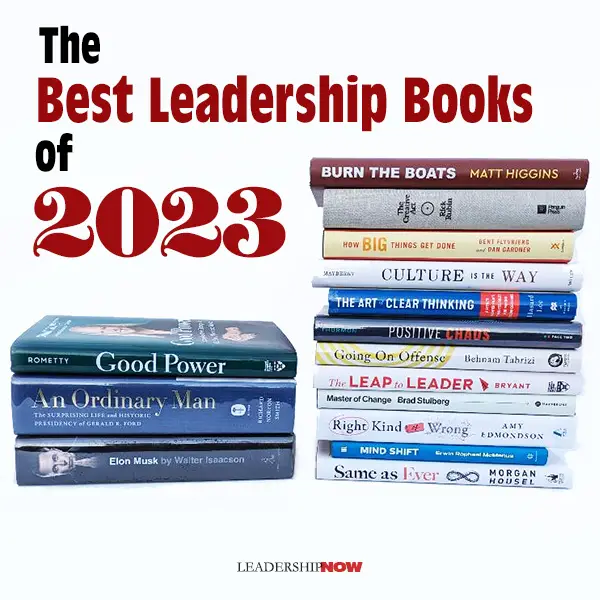
THE titles listed below—published in 2023—capture many of the key themes and trends organizations are wrestling with. In a time of great uncertainty, courage, empathy, love, and a passion to improve the status quo now and forever are required. These titles address how it can be done and how others are doing it. How many have you read?
(William Morrow, 2023)
(Penguin Press, 2023)
(Currency, 2023)
(Wiley, 2023)
(St. Martin's Press, 2023)
(Page Two, 2023)
(Ideapress Publishing, 2023)
(Harvard Business Review Press, 2023)
(HarperOne, 2023)
(Atria Books, 2023)
(Convergent Books, 2023)
(Portfolio, 2023)
Biographies:
(Harvard Business Review Press, 2023)
(Harper, 2023)
(Simon & Schuster, 2023)
Posted by Michael McKinney at 10:06 AM
12.08.23

Six Impulses that Sabotage Us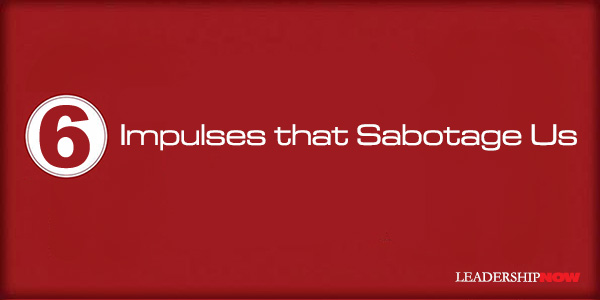
THERE are some impulses that do not serve us well, and if we are not careful, they will sabotage what we want and derail us. Les Parrott offers six in 3 Seconds: The Power of Thinking Twice. He claims it only takes three seconds to reconsider your first impulse and transform your life. 1. The Impulse to Give Up Before Trying When faced with a problem that’s seemingly beyond your control, you are sure to feel helpless ... if you give in to your first impulse. You’ll say, “There’s nothing I can do about it.” 2. The Impulse to Shun a Challenge When faced with a challenge that seems beyond your abilities, you are sure to feel overwhelmed ... if you give in to your first impulse. You’ll say to yourself, “It’s too difficult to even try.” But if you listen to that message, you’ll never discover what is often true: that you’re far more capable of facing this challenge than you imagined. 3. The Impulse to Settle for the Status Quo When you have the opportunity to do what you dream of, what your heart longs to do, you are sure to feel unfulfilled ... if you give in to your first impulse. You’ll say, “I’ll simply do what happens to come my way.” 4. The Impulse to Shirk Responsibility When you are in a thorny predicament and looking for excuses or ways to lay blame, you are sure to feel defensive ... if you give in to your first impulse. You’ll be tempted to say, “It’s not my problem.” 5. The Impulse to Do the Mere Minimum When given an assignment at work or at home, you are sure to do the minimum required ... if you give into your first impulse. In fact, most of us did that during our elementary and high school years. Sure, some kids lived for “extra credit,” but they were in the minority. It’s tempting to keep following the easier first impulse throughout college and career, too. 6. The Impulse to Avoid Taking Action When you look at plans that seem too big to tackle, you are sure to think and talk about them without actually doing anything ... if you give in to your first impulse. You’ll say, “I’m not quite ready, but I will be someday.” To counteract these impulses, we need to learn secondary impulses. It only takes three seconds to momentarily stop and consider the outcomes we really want. “It requires a suspension of our natural inclination to remember that we have a choice in what we will say, what we will do, and who we will be. ‘In the study of one’s personal language and self-talk,’ said Sidney Madwed, ‘it can be observed that what one thinks and talks about to himself tends to become the deciding influence in is life. For what the mind attends to, the mind considers.’” It only takes three seconds to empower yourself and do whatever it takes. “I can’t do everything, but I can do something.” It only takes three seconds to say, “I love a challenge,” and do whatever it takes. “I’m willing to step up and give it an honest try.” It only takes three seconds to forgo the impulse to take whatever comes your way, fuel your passion with a personal vision of your future, and do whatever it takes. “I’ll do what I’m designed to do.” It only takes three seconds to take ownership, be unwilling to pass the buck and do whatever it takes. “The buck stops here.” It only takes three seconds to choose to exceed expectations and do more than is required. “I’ll go above and beyond the mere minimum.” It only takes three seconds to decide to do it now. “I’m diving in … starting today.” Les Parrott tackles each of these impulses and explains why and how to replace our first impulse with a second impulse that serves us well. The second impulse involves risk. “When you disown your helplessness, you risk responsibility. When you embrace a challenge, you risk losing face. When you fuel your passion, you risk the comfort of what’s known. When you own your piece of the pie, you risk taking the blame. When you walk the extra mile, you risk being exhausted. When you quit stewing and start doing, you risk failure.” But it’s better than the risk of regret and making progress. Instead of settling for “whatever,” learn to do “whatever it takes.” 
Posted by Michael McKinney at 08:50 AM
12.07.23

Leading Thoughts for December 7, 2023
IDEAS shared have the power to expand perspectives, change thinking, and move lives. Here are two ideas for the curious mind to engage with: Consultant Robert "Dusty" Staub on the courage to face our current reality: “Why do so many intelligent people miss the obvious, focusing on what they wish to be true versus what is currently true and staring them in the face? The answer lies in how our minds distort reality to protect us from doubts or to protect our cherished assumptions and beliefs. For many of us, we simply do not wish to see something that indicates we might have to change our lives and our ways of doing things. Current reality can be inconvenient and downright unpleasant. It often challenges conventional wisdom. Courageously facing current reality means we may upset people who are unwilling to see it, and they will, in turn, pressure us to back down or subscribe to their viewpoint.” Source: The 7 Acts of Courage : Bold Leadership for a Wholehearted Life Henry Kissinger on the leader’s challenge: “Whatever their personal characteristics or modes of action, leaders inevitably confront an unrelenting challenge: preventing the demands of the present from overwhelming the future. Ordinary leaders seek to manage the immediate; great ones attempt to raise their society to their visions.” Source: Leadership: Six Studies in World Strategy Look for these ideas every Thursday on the Leading Blog. Find more ideas on the LeadingThoughts index.
Posted by Michael McKinney at 08:03 AM
12.04.23

Society Needs a Leadership Paradigm Shift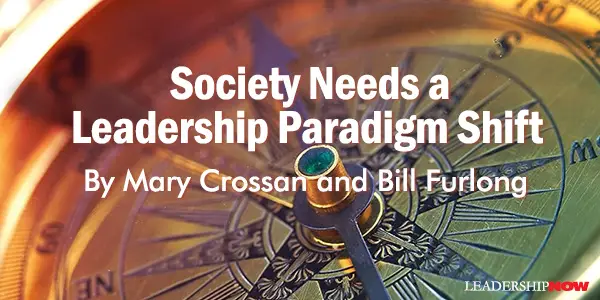
THE contemplation of character has engaged great minds reaching back to Confucius, Aristotle, and Plato. Building on the shoulders of such philosophical giants and the subsequent research over millennia, science has further defined, assessed, and developed the concept of character to apply findings to organizational leadership. But what has become abundantly clear is that disregarding the science of leaders’ character has led to incredible dysfunction for organizations and society as a whole. In countless cases, leaders have missed opportunities to tap into the enormous potential associated with the development of character to create innovation and excellence. What the Science of Leadership Character Reveals In Fred Kiel’s groundbreaking book, Return on Character, he discussed the seven-year study of 84 CEOS, their executive staffs, and their employees, which found that CEOs with strength of character brought in nearly five times greater return on assets and enjoyed a 26 percent higher level of workforce engagement. Further research at the Ivey Business School has revealed the following benefits of leaders moving from weak to strong character:
Taking into consideration two of these benefits — employee voice (18%) and psychological safety (16%) — alone gives all the evidence needed to show that you can’t turn a blind eye to the development of character. These metrics relate to judgment and decision-making in organizations, and it’s easy to see that if the leader doesn’t allow employees to feel psychologically safe, they won’t voice their concerns, nor will they engage in risk-taking needed for innovation for fear of reprisal. Let’s take a look at the anatomy of character, how it establishes itself, and what leaders can do about it. Our research reveals a consistent overweighting of the character dimensions of drive, accountability, and integrity and an associated under-weighting of temperance, transcendence, humility, and humanity. However, when the traits associated with integrity — being authentic, candid, transparent, principled, and consistent — are overweighted without being counterbalanced by the under-weighted dimensions — self-awareness, vulnerability, empathy, compassion, patience, and calm, a person can end up being a bully, abrasive, dogmatic, and toxic. In terms of psychological safety, how safe do employees feel when their leaders are bullies, abrasive, dogmatic, and toxic? How likely are employees going to speak up under these conditions? The anatomy of character explains the persistence of toxicity in organizations — and these are matters of character, not matters of competence. Now consider what enables high performance in organizations. The space for innovation and growth relies on dimensions of character that are often in short supply, like transcendence — being appreciative, inspired, purposive, optimistic, creative, and future-oriented. The beauty associated with the science of character development is that investments made to develop character underpin all key metrics of the organization. The Underlying Problem Among thousands of leaders with whom we’ve worked, few would describe themselves as ineffective or toxic leaders until they see themselves through others’ eyes. We tend to judge ourselves on our intentions and others on their behavior, and the gap between them is significant. This is compounded by the fact that self-awareness — a behavior associated with humility — is exceptionally weak. Research reveals that although 85 percent of people believe they’re self-aware, only 10 percent actually are. We’ve constructed an “anatomy of leader character” based on a set of 11 dimensions and associated behaviors. This is only the starting point, but that starting point provides an exceptionally solid research base to support the paradigm shift to elevate character alongside competence. A key part of the science shows that character and competence are like apples and oranges in terms of what they are, how they need to be developed, and how they can be applied. Too often in organizations, the notion of competency drifts into that of character, missing the fundamental tenet that character is a habit of being that permeates a person’s personal and professional life, and, importantly, that the dimensions of character are interconnected. The conditions that we thought of as a strength are actually operating like a vice. Making the Necessary Course Correction Although it won’t happen overnight, these key steps will promote the needed paradigm shift to develop positive dimensions of character: 1. Cultivate awareness: The paradigm shift starts with a clear understanding of what character is and how it operates. Extensive research and analysis concerning this can equip leaders with the necessary means to scale it in their own organizations. It is critical to understand that character is not just about morals and ethics but, in its fullest form, about human flourishing through better judgments and well-being. It’s this more complete formulation and habit of character that we look to import into leaders’ lives. This step is straightforward and quite doable. 2. Attend to your character development: Again, many resources are available to start this journey, including an app to develop character. The more you apply yourself toward character development, the better able you are to observe it in yourself and in others. It tends to snowball; it’s contagious. You begin to understand the ways in which your organization enables or inhibits the development of character and where the overweighting and underweighting are occurring. 3. Work on the organization: Organizations are hard-wired around competence. Simply put, wherever competence resides, character belongs. This is a more difficult part of the journey, and for leaders to take on an organizational paradigm shift, it needs to course correct throughout. For example, all facets of selection, promotion, and rewards must be undertaken through the lens of character. This may sound daunting, but many organizations are embarking on the journey — from nonprofits, to professional sports teams, to healthcare organizations, to financial institutions, and more. The science surrounding character provides the critical compass for the path forward.  
Posted by Michael McKinney at 06:48 AM
12.01.23

First Look: Leadership Books for December 2023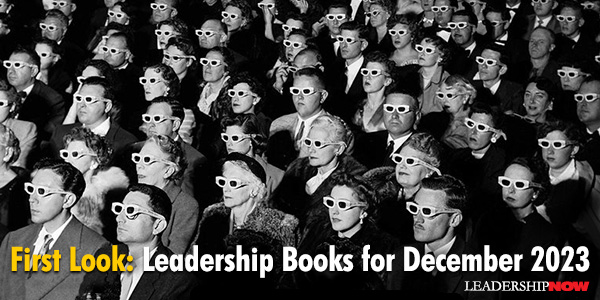
HERE'S A LOOK at some of the best leadership books to be released in December 2023 curated just for you. Be sure to check out the other great titles being offered this month.
How did Apple overcome a culture of secrecy? How did Pixar out-innovate Disney? Why do companies kill creativity? Does Shark Tank teach us something about the way we pursue success that isn't true? We've been told that working harder and smarter is the only way to succeed in business and life. But it's not true. Hustle culture is causing burnout and pain in our lives, making us feel divided. What if instead we focused on working creatively with others? And asked How can we shape cultures people love? There is hope in co-creation. Brave Together is a deep exploration into how we can live and lead as co-creators, filled with unexpected stories, powerful principles, and a future-oriented framework.
We’re told you can lead a horse to water, but you can’t make it drink. But what if this is not true? Having spent the past two decades helping Fortune 500 brands and leaders embrace the changes they’d rather fight or ignore, Michael McQueen understands what it takes to change even the most stubborn minds. But persuading others is getting harder and harder. In our ideology-driven and polarized age, certainty has taken the place of curiosity and open-mindedness has given way to obstinance. Drawing on the latest discoveries in disciplines ranging from neuroscience to behavioral economics, McQueen suggests that we are too often using nineteenth- and twentieth-century techniques to change twenty-first-century minds—and are wondering why it’s not working. What we need is an upgrade in our understanding of what it really takes to influence others.
Learn the NASA Astronaut mindset to solve problems, provide leadership in the face of adversity, and never give up when pursuing your wildest ambitions. Mike Massimino achieved his dream of exploring space. Now he distills stories and insights from NASA into an actionable guide to accomplish your biggest goals. Mike reveals how to make possible the seemingly impossible—on Earth. Written with characteristic wit and a big heart, Mike identifies ten hard-earned lessons of spaceflight and his other life experiences, including: One in a Million Is Not Zero, The Thirty-Second Rule, Be Amazed, Know When to Pivot. We all have our own personal “moon shots” we’d like to take in life, but as mission control will tell you, doing one big thing really means getting a thousand little things right along the way.
What’s the difference between your competitor and your enemy? You know who your competitors are. You keep tabs on them regularly, and can list them calmly, along with their strengths and weaknesses. But your enemies are a whole other matter. They’re the haters and the doubters who said you’d never make it, the ones who stomped on your dreams. When you think about your enemies, you get emotional. You feel like you won’t let anything—or anyone—stop you. In Choose Your Enemies Wisely, Patrick Bet-David shows how to harness that emotion to turbocharge your business, dominate this year, and grow for generations after. But first, you need to choose your enemies wisely.
A fresh take on assessing your priorities – both professionally and personally – to ensure you are in the best position to make a positive difference to the people and places around you, and in the process to transform your own life. The disruptive moment in which we find ourselves living demands that we are our own agents of change. The Seven Games of Leadership is a guide for readers through seven key phases of personal and professional development, with the aim not of climbing a corporate ladder but of finding true and lasting satisfaction in what they do. It encourages the realization that revolutionary change is not about destroying the current status quo, but about co-designing and rebuilding different paths for individuals to thrive, and go on to have a positive impact on society at large.
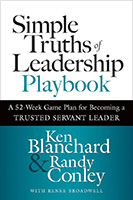 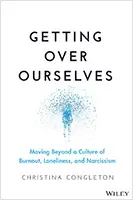 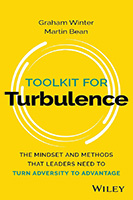 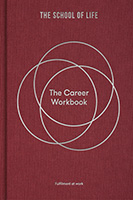
“... a mind needs books as a sword needs a whetstone, if it is to keep its edge.” — George R.R. Martin, A Game of Thrones
Posted by Michael McKinney at 07:41 AM
|
BUILD YOUR KNOWLEDGE


How to Do Your Start-Up Right STRAIGHT TALK FOR START-UPS 
Grow Your Leadership Skills NEW AND UPCOMING LEADERSHIP BOOKS 
Leadership Minute BITE-SIZE CONCEPTS YOU CAN CHEW ON 
Classic Leadership Books BOOKS TO READ BEFORE YOU LEAD |
|